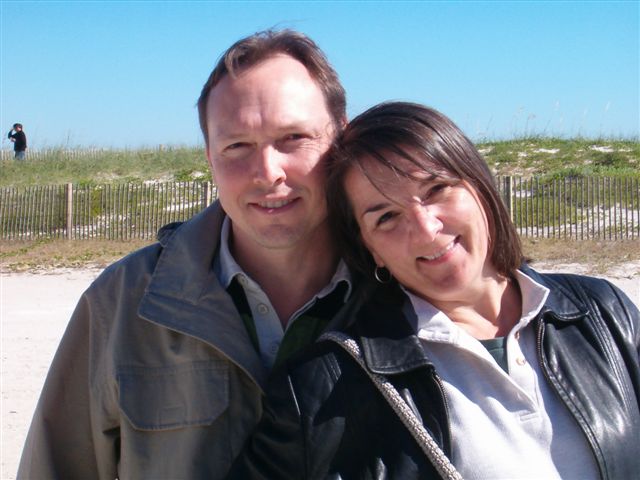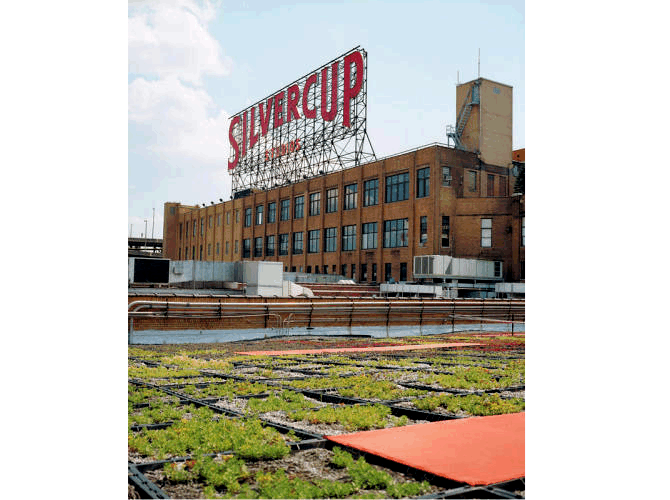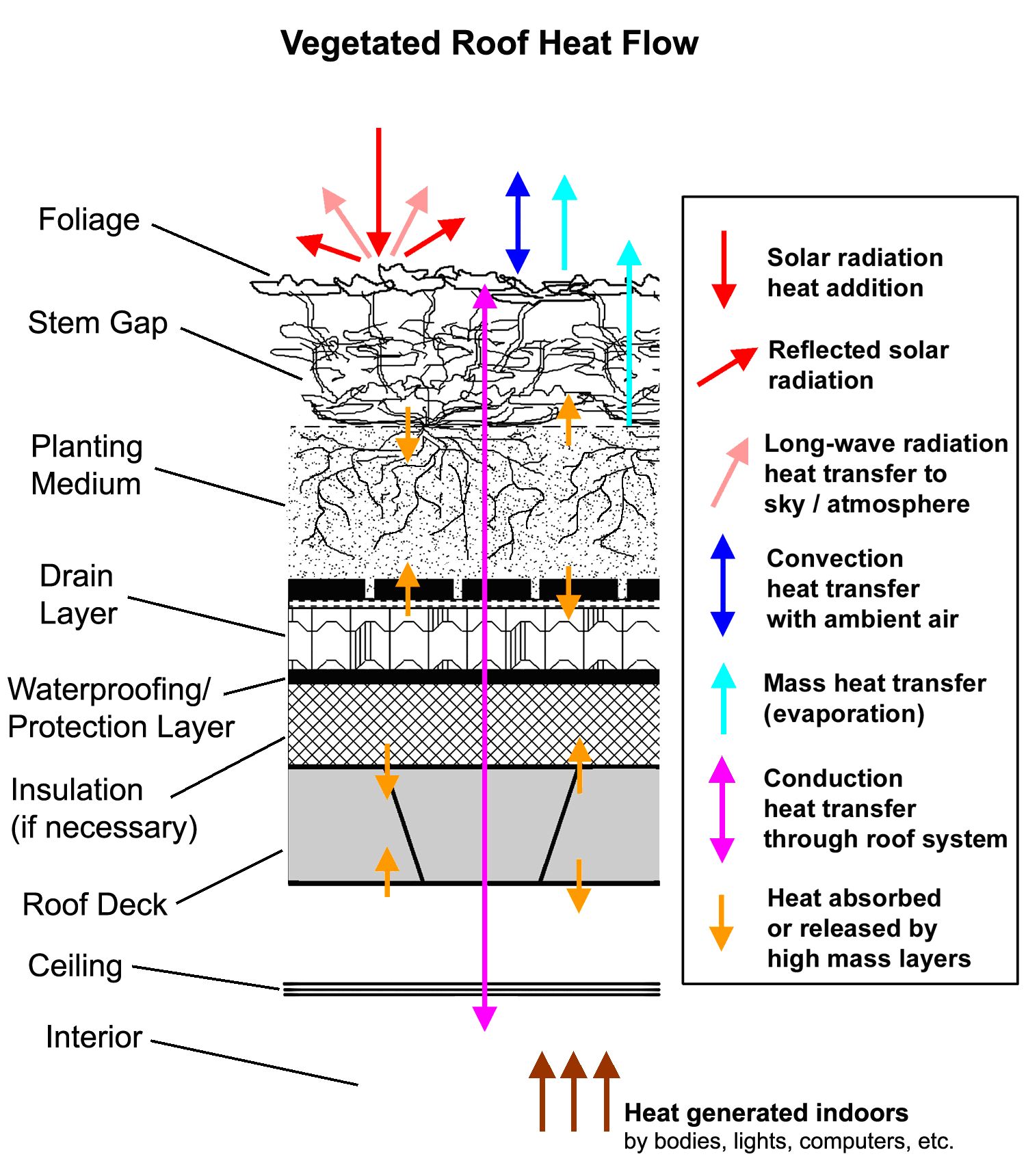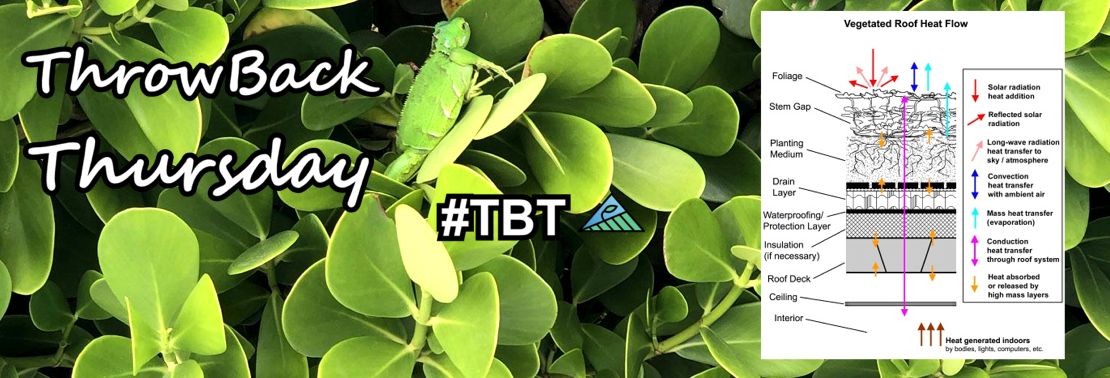#TBT: Green Roof Energy Series
By Chris Wark, Energy Editor – Originally posted April 5, 2010
Inaugural Green Roof Energy Column
Cooler than Cool Roofs: How Heat Doesn’t Move Through a Green Roof Intro
Seventeen years ago, my wife, Wendy, and I attended the Chicago’s Greening Symposium as part of our exploration into the world of roof gardening.
At the time, I was researching fuel cell systems for Caterpillar and thermodynamics was fresh on my mind. So during the Q & A of a green roofing presentation at the Symposium, I had to ask what the energy benefits are of vegetating a roof. The answer was quick and almost terse: “There aren’t any.” My brain responded just as quickly: “That can’t be right. I feel a mission coming on.” Thus began a year-long endeavor to apply my mechanical engineering education and experience to unravel the mysteries of how heat moves through a vegetated roofing system.
The result was the creation of a computer program that describes, in detail, the heat transfer through any type of roof system, energy savings (or costs) associated with it, and the subsequent financial impact. At the time, validation was a challenge due to the dearth of instrumented green roof demonstration projects. In fact, the only one published by 2002 was the Thermal Performance of Green Roofs study done by the National Research Council Canada. Fortunately, this computer program, eventually dubbed Q-Calc, relied entirely on well-established engineering calculations and data and as it turned out, was easily validated by some key plant biology research.
Shortly after attending Chicago’s Greening Symposium in 2002, Wendy and I established SHADE Consulting (later renamed Green Roof Innovations or GRI).

For the next three years we would provide a variety of green roof consulting services and develop three different modular green roof concepts, one of which has been picked up by a company in China. With SHADE/GRI, I had the opportunity to provide energy consulting for some prominent green roofing projects, including pilot programs for the City of Chicago, the City of Portland (OR), the City of New York, and projects for [the now defunct] Earth Pledge, including the Silvercup Studios green roof.

The finished Silvercup Studios greenroof, as seen a year later in Metropolis Magazine (Sept 11, 2006). Image: Joseph Maida
In 2005, I moved on to do more whole-building and other specialty energy analysis, but green roofs still hold a special place in my heart. So I decided to spread the love and put together a primer following my discoveries of how heat moves through a green roof.
Cooler than Cool Roofs: How Heat Doesn’t Move Through a Green Roof

Figure 1: Copyright 2010 Christopher Wark
“Cooler than Cool Roofs: How Heat Doesn’t Move Through a Green Roof” is a 7-part series explaining the key aspects of green roof heat transfer issues and the best ways to take advantage of a green roof’s energy benefits. The topics that will be covered are:
1. The Essentials: Heat Transfer by Layer
2. Evapotranspiration
3. Keeping Drought-Resistant Plants Cool
4. When Weight is Good
5. Assuming Insulation
6. Green Roofs vs. Cool Roofs
7. The Green Roof Energy Secret and How To Use It
Some of this discussion applies to more than just vegetation systems. In fact, you may find it useful for any roofing system or exterior wall. All of the discussion is based on long-established textbook physics, very conventional building engineering, and a little bit of recent plant research.
I hope you enjoy this Green Roof Energy Series and are able to get a few “Ah ha!” moments out of it, or at least gain a better appreciation for the complex nature of something as simple as a green roof.
~ Chris Wark
Publisher’s Note:
See Chris Wark’s entire 7-part Green Roof Energy Series from 2010-2011 individually below, and in PDF: “Cooler Than Cool Roofs: How Heat Doesn’t Move Through a Green Roof”
“Cooler than Cool Roofs: How Heat Doesn’t Move Through a Green Roof” Green Roof Energy Series
Part 1: The Essentials – Heat Transfer by Layer
Part 3: Keeping Drought-Resistant Plants Cool
Christopher G. Wark

Christopher Wark is Principal of Wark Energy Consulting and the founder of Ponix MicroAg LLC, a development-stage company that is creating a line of compact plant enclosures for the CEA market. Chris has over 30 years of multidisciplinary engineering experience providing mechanical, analytical, and electronics support and services to manufacturers, universities and national labs. He holds Bachelor and Master of Science degrees in Mechanical Engineering (with a minor in Materials Science) from Washington State University where his graduate work focused on thermodynamics, fluid dynamics, and combustion.
For the past 19 years, Chris has focused his efforts on the development and promotion of technical solutions in architecture and construction. He has provided energy and environmental quality analysis, CFD modeling, and LEED consulting services for several engineering and building consulting firms in New York and California. In 2002, Chris established SHADE Consulting/Green Roof Innovations (GRI) with his wife Wendy.
With GRI, Chris developed several innovative modular eco-roof systems and in 2010, Chris designed a modular planting system in partnership with Guiyang Chuangjia High-Tech Accelerator Co. LTD in Guiyang, China. In Guiyang, he saw how most of the apartment balconies and rooftops were filled with vegetable gardens. The idea of providing an improved environment for food production in built environments, along with key GRI design concepts, inspired the development of the patented pPod™ miniature greenhouse developed by Ponix MicroAg.
Contact Christopher Wark at: cwark@pponix.com, 917-565-6919.
 Greenroofs.comConnecting the Planet + Living Architecture
Greenroofs.comConnecting the Planet + Living Architecture






Safer Space in the Age of Covid-19 – Greenroofs.com –
[…] Greenroofs.com collaborator Chris Wark’s 7-part Green Roof Energy Series which originally ran from April 5, 2010 through April 28, 2011. His “Cooler than Cool […]
Safer Space in the Age of Covid-19 – Low News
[…] Greenroofs.com collaborator Chris Wark’s 7-part Green Roof Energy Series which originally ran from April 5, 2010 through April 28, 2011. His “Cooler than Cool Roofs: […]
Green Roof Energy Series Part 5: Assuming Insulation | Celestine Design
[…] Chris Wark’s entire 7-part Green Roof Energy Series from 2010-2011 online and in PDF: “Cooler Than Cool Roofs: How Heat Doesn’t Move Through a Green […]
Green Roof Energy Series Part 7: The Secret and How To Use It | Celestine Design
[…] Chris Wark’s entire 7-part Green Roof Energy Series from 2010-2011 online and in PDF: “Cooler Than Cool Roofs: How Heat Doesn’t Move Through a Green […]
Safer Space in the Age of Covid-19 | Celestine Design
[…] Greenroofs.com collaborator Chris Wark’s 7-part Green Roof Energy Series which originally ran from April 5, 2010 through April 28, 2011. His “Cooler than Cool Roofs: […]
#TBT: Energy and Green Roofs: Beyond the Building | Celestine Design
[…] and Green Roofs: Beyond the Building” is the follow up to Chris Wark’s 7-part Green Roof Energy Series which originally ran from April 5, 2010 through April 28, […]